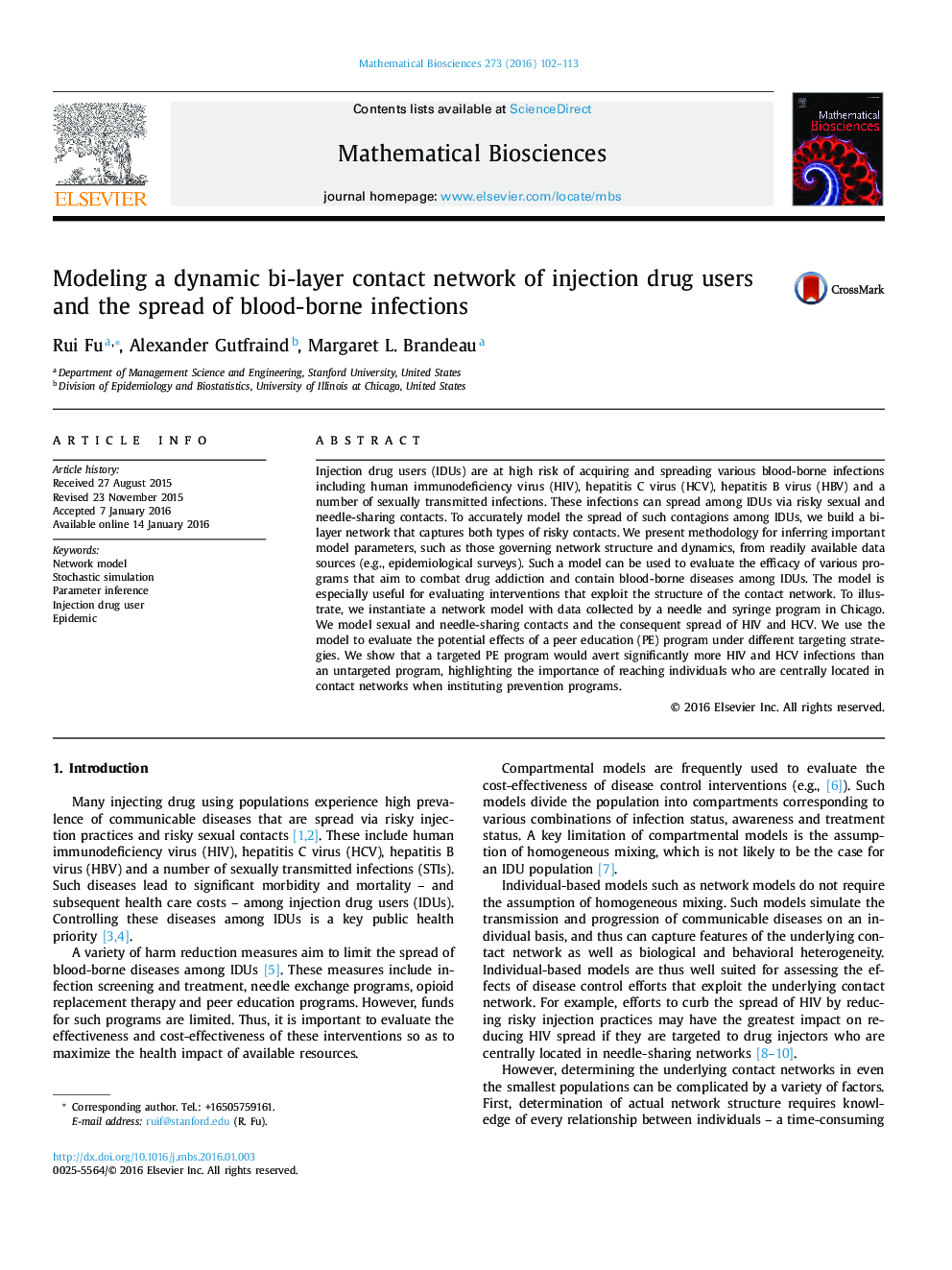| کد مقاله | کد نشریه | سال انتشار | مقاله انگلیسی | نسخه تمام متن |
|---|---|---|---|---|
| 4499928 | 1624007 | 2016 | 12 صفحه PDF | دانلود رایگان |
• A bilayer network model of injection drug users (IDUs) is developed.
• The model incorporates sexual and needle-sharing contacts.
• The model can capture diseases spreading among IDUs (e.g., HIV, HCV).
• The model can evaluate efficacy of drug abuse and disease interventions among IDUs.
Injection drug users (IDUs) are at high risk of acquiring and spreading various blood-borne infections including human immunodeficiency virus (HIV), hepatitis C virus (HCV), hepatitis B virus (HBV) and a number of sexually transmitted infections. These infections can spread among IDUs via risky sexual and needle-sharing contacts. To accurately model the spread of such contagions among IDUs, we build a bi-layer network that captures both types of risky contacts. We present methodology for inferring important model parameters, such as those governing network structure and dynamics, from readily available data sources (e.g., epidemiological surveys). Such a model can be used to evaluate the efficacy of various programs that aim to combat drug addiction and contain blood-borne diseases among IDUs. The model is especially useful for evaluating interventions that exploit the structure of the contact network. To illustrate, we instantiate a network model with data collected by a needle and syringe program in Chicago. We model sexual and needle-sharing contacts and the consequent spread of HIV and HCV. We use the model to evaluate the potential effects of a peer education (PE) program under different targeting strategies. We show that a targeted PE program would avert significantly more HIV and HCV infections than an untargeted program, highlighting the importance of reaching individuals who are centrally located in contact networks when instituting prevention programs.
Journal: Mathematical Biosciences - Volume 273, March 2016, Pages 102–113
